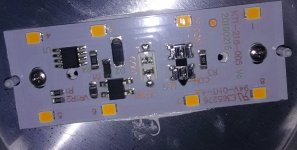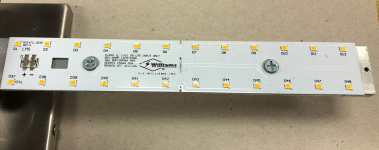You aren't just "technically incorrect". You're grossly incorrect. You have no idea what you're talking about yet you call yourself a technical advisor? LEDs are not resistive elements and you can't just hook up raw LED elements to a voltage source and be like voilà. A standard PoE power supply is a voltage source. You can't just hook up raw LED elements to a low impedance source. A current source power supply wouldn't be a standard PoE power supply. It would be an external LED ballast with an RJ45 connector.
There are rudimentary LED flashlights that use a bunch of LEDs in parallel connected across three AAA batteries in series. The impedance of battery becomes the LED ballast causing batteries to heat up and this becomes part of the ballasting loss. Dinky little interior LED lamps for automotive interior lighting is often just 3 or 4 LEDs in series with a series resistor as a ballast, but the regulation is terrible and if you scale it up, the ballasting loss would be unacceptable. 25-30% ballasting loss is fine for dome light, but not for luminaires that emits thousands of lumens. It will cost you big time in output lumen regulation and lumens per watt.
Low production volume alternative voltage LEDs sometimes use mass produced LED arrays intended for 120v lamps and pair it with a boost converter based 12/24v input LED ballast, although these special application devices don't have DOE efficacy standards to meet and because of the transformation ratio, the lumens per 12v side input is usually worse than 120v lamps. If you're going to do PoE power supply, you'll have to add the power supply loss as well.
Also, you mentioned using a UPS. You know, APC SmartUPS line-interactive UPS in the 1,000 to 1,500VA scale has a standby power consumption of like 40W, or 350kWh/year or about the same as a high efficiency refrigerator.



